Commentaries
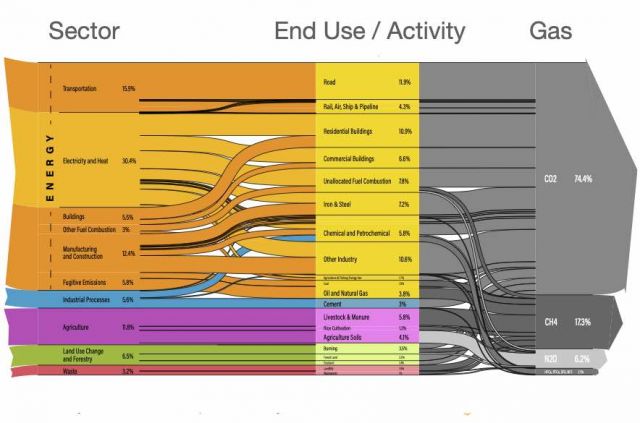
By Thomas Lützkendorf (Karlsruhe Institute of Technology, DE)
The sole reliance on a sectoral approach to GHG emission reductions is problematic and incomplete because it fails to engage with the complex array of built environment actors. A different conceptual and practical approach is proposed which involves 'areas of need' and 'areas of activity'. A scalable GHG budget for the built environment will be more effective in reducing built environment GHG emissions and allow actors to take more control over their emissions.
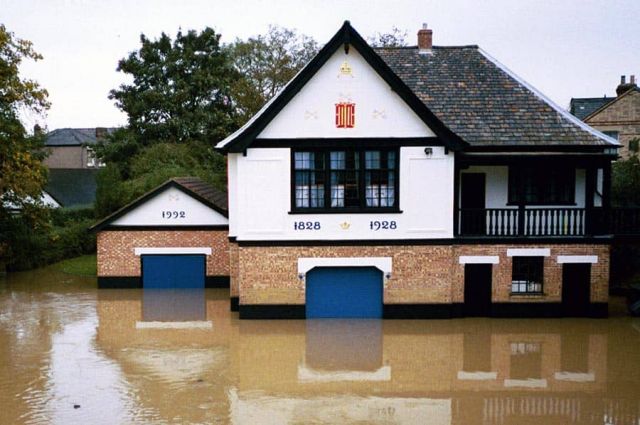
By Ilan Kelman (University College London, UK)
Climate change is not separate from other built environment challenges. To be positively impactful and effective, COP-26 needs to take on board the connections between climate change and other topics. This will ensure effective climate change action for our infrastructure.
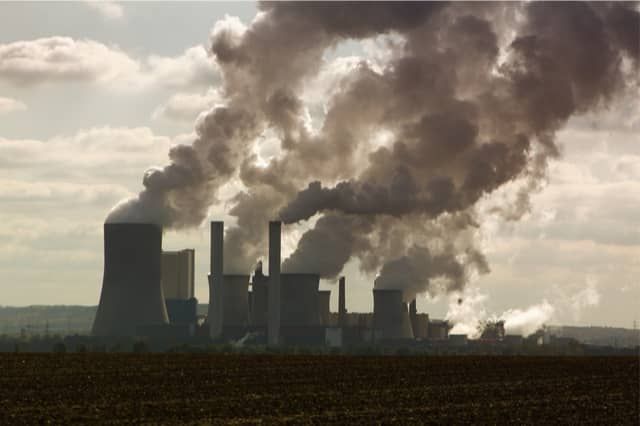
By Magdalena Barborska-Narozny (Wroclaw University of Science and Technology, PL)
The geopolitics of GHG emission reductions is likely to give competitive advantage to wealthier countries. International climate efforts at COP-26 and elsewhere need to address funding commitments to less advantaged countries. Climate agreements also need to ensure that all counties have suffcient agency to achieve carbon neutrality and are not made vulnerable or disadvantaged.
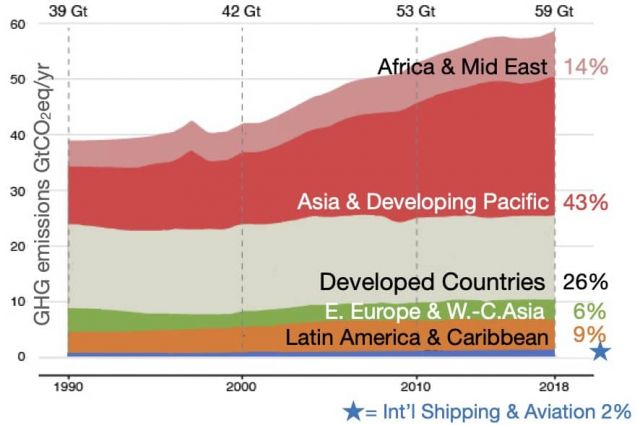
By Mark Levine (Senior Advisor, Lawrence Berkeley National Laboratory, US)
As the economies and cities in developing countries grow, they will represent the total global increase in GHG emissions through the end of this century. These countries currently have the least capability to limit GHG emissions. In addition to ensuring radical GHG emission reductions in developed countries, COP26 must also now provide a range of significant assistance to developing countries to create local capabilities to reduce emissions. A broad outline is presented of what this entails.

By Jeroen van der Heijden (Victoria University of Wellington, NZ and Australian National University, AU)
COP-26 represents an important turning point for cities, the research community and NGOs. We must shift away from creating more experiments and now move toward implementation and the challenges of scaling. City governments and their stakeholders may be better off to begin asking
questions like: Has the problem we want to solve been solved elsewhere? Can we replicate
or adjust a proven-to-work intervention from elsewhere?

By Bruno Peuportier (MINES ParisTech, PSL Research University, FR)
The longevity of buildings and lengthy roadmaps for a transition stretching to 2050 are misaligned with the urgency to act on the climate situation and the short mandates of elected officials. In this context, dealing with time is complex. Good practice needs to focus on acting and reporting during a shorter period (the electoral cycle) rather than postponing the progress to the next period. Three specific actions are recommended: (1) the need for clear actions, measurement and reporting; (2) policies and regulations must account for complexity and not result in merely shifting impacts; and (3) life cycle thinking.

What would a radical agenda be for the New European Bauhaus?
Matti Kuittinen (Aalto University) considers the multiple challenges facing society: the climate emergency, loss of biodiversity and overconsumption of material resources. He argues the New European Bauhaus has the potential to adopt a radical agenda, similar to its original namesake, as part of a transformational process. A personal vision is presented of what that radical agenda needs to be in order to tackle these critical issues and create positive cultural change.

Why is interdisciplinary research is important?
Catalina Turcu (UCL), Lauren Andres (UCL), Melanie Crane (University of Sydney) and Ding Ding (University of Sydney) explain the importance of interdisciplinarity for tackling complex and "wicked' problems associated with urban sustainability. A critical reflection is presented to unpack some of its challenges.

What is an effective set of policies and strategies to deliver heat pumps to homes?
The UK Government has pledged to install 600,000 heat pumps per
year by 2028, up from 50,000 today. As we await the release of the UK Government's
Heat and Buildings Strategy, Aaron Gillich (BSRIA LSBU Net Zero Building Centre) reflects on what constitutes effective strategy in terms of delivery, and how industry can help drive the low carbon transition.
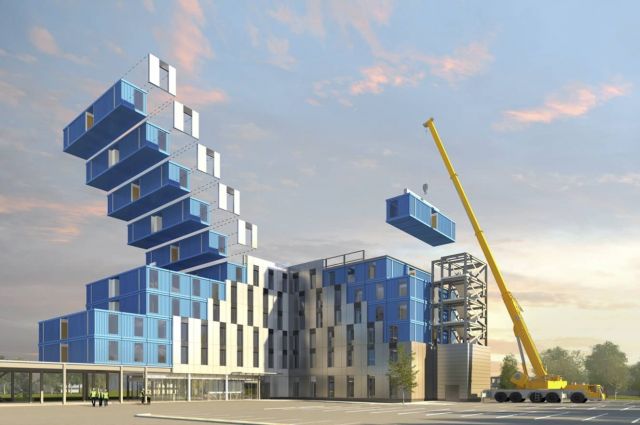
Why has the industrialised production of buildings failed?
Construction historian Andrew Rabeneck provides a historical overview for modern methods of construction (MMC) and explains why it has not succeeded. The recent demise of US company Katerra is considered in a wider context of factory-based offsite construction methods. Is there sufficient aggregation of demand, assurance of funding appropriate regulatory environment or labour acceptance to provide a sound basis for this dream? Understanding why construction is the way it is now helps to reveal the basic mechanics of meeting the needs of a very diverse market.

An innovation challenge that shattered the performance ceiling for residential cooling
How can we implement the learnings from this global innovation challenge to shape the future of cooling?
Ankit Kalanki, Caroline Winslow, Iain Campbell (Rocky Mountain Institute) explain the outcomes and implications of this initiative.
In many parts of the world, access to affordable cooling is increasingly viewed as a necessity. Cooling supports positive health outcomes, higher productivity, and accelerated economic development. However, over 3 billion people in the world today are at some risk to their health and safety due to lack of access to coolth. Increasing population and rapid urbanization, coupled with a warming planet, are expected to drive the number of residential/room air conditioners (RACs) in service from 1.2 billion units today to 4.5 billion units by 2050 (Campbell et al., 2018). However, providing increased access to cooling using traditional approaches comes at an unaffordable environmental cost.

How can professionals begin to engage with climate justice?
Design
professionals know that buildings, cities, and infrastructure are central to
the challenge of climate change. Most embrace the need to dramatically improve
performance to support the shared goals for climate protection. Joel Ann Todd,
Christopher R. Pyke and Susan Kaplan (who are working on USGBC's All In: Building Equity Together) reflect on the B&C special
issue CLIMATE JUSTICE: THE ROLE OF THE BUILT ENVIRONMENT. Acting on social equity issues is a vital
professional responsibility - especially to protect those made vulnerable or
disadvantaged by climate change.

XXX
Simone Barbosa Villa (Federal University of Uberlândia) and Eduardo Grala da Cunha (Federal University of Pelotas) respond to the B&C special issue EDUCATION & TRAINING: MAINSTREAMING ZERO CARBON. Low and zero carbon building in Brazil is currently at the demonstration stage. The focus of the academic community is therefore on raising awareness and standards, rather than implementing changes in education and the curriculum.
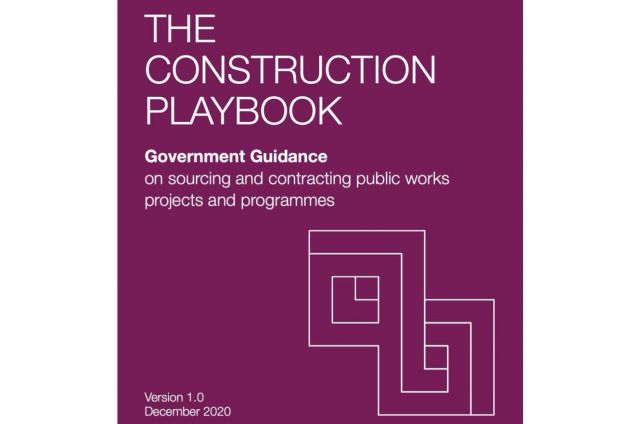
The UK government is redefining its role as a construction sector client - with widespread and signficant consequences.
How governments procure their building and civil engineering projects has significant impacts on both industry practices and competences as well as wider outcomes for civil society. Stuart D. Green (University of Reading) considers the UK government's new approach. It is contended there is little which has not been said before, and much which remains unsaid.

Fresh thinking is needed on how we share spaces and services in dwellings and cities
Single occupancy households consume more resources per capita, and demographics suggest single occupancy is now widespread in many countries. Environmental policies need to adjust to include per capita consumption to account for occupancy and efficient use of resources. Diana Ivanova, Tullia Jack, Milena Büchs and Kirsten Gram-Hanssen explain how the sharing of resources at domestic, neighbourhood and urban scales can have positive environmental and social impacts.

An inspiring transformation of architectural education in the Global South shows a successful integration of sustainability.
Mark Olweny (University of Lincoln) comments on the B&C special issue EDUCATION & TRAINING: MAINSTREAMING ZERO CARBON. Leadership in Global South demonstrates the positive transformation of architectural education. The Uganda Martyrs University implemented a new curriculum to integrate sustainability into the architectural curricula. Change occurred due to staff dedication, commitment and stamina - although overcoming resistance at several levels was not easy.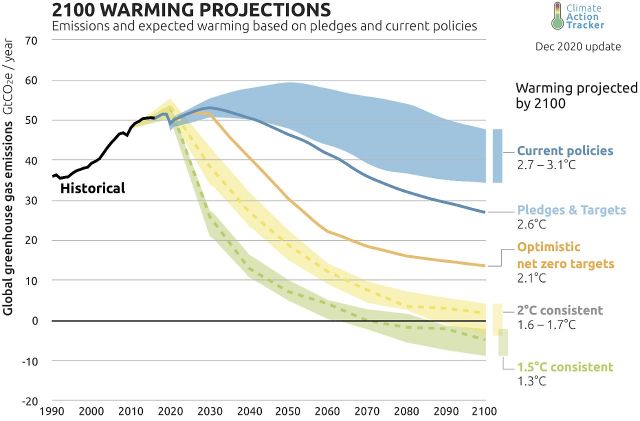
How can the real estate and construction industries use carbon metrics to apportion responsibility and radically reduce their GHG emissions?
Users, investors and policy makers need reliable information in order to take effective action against climate change. It is clear that KPIs must be derived starting from the reduction of GHGs, and that the built environment (i.e. real estate and construction) should accept one of the largest shares of this burden. Sven Bienert (University of Regensburg) reflects on the B&C special issue CARBON METRICS FOR BUILDINGS AND CITIES: ASSESSING AND CONTROLLING GHG EMISSIONS ACROSS SCALES and argues the industry needs to urgently agree on what are appropriate and just measures for the industry, particularly how GHG budgets should be distributed.

How can large cities respond to the loss of population, a higher vacancy rate and a reduced economy and tax base?
Although the world is increasingly urbanising, it is medium and small cities that may benefit the most. If large cities will shrink in population, then how can spaces that are underutilized be redeployed and repurposed? Chiara Tagliaro (Politecnico di Milano) argues for a creative and integrated approach for how cities can rethink their socio-economic and planning models to accommodate revised notions of urbanization.

As a matter of urgency, professional institutes and course accreditation organisations must ensure archtiectural education is fit for purpose in the 21st century. Mainstreaming zero carbon must be part of the curriculum.
Kira Gould (Kira Gould Connect) comments on the B&C special issue EDUCATION & TRAINING:MAINSTREAMING ZERO CARBON. How can American architectural education respond to the challenges of climate change? Gatekeeper organisations have a major role: their leadership is needed to raise the standards for course accreditation to ensure that both students and teachers have competences to address social, environmental and climatic issues (NAAB). Higher standards for licensure and entry to the profession (NCARB and AIA) will also drive changes in education.

Carbon literacy and carbon neutral design in higher education are part of a larger package of needed measures.
Raymond J Cole responds to the B&C special issue EDUCATION AND TRAINING: MAINSTREAMING ZERO CARBON. The ambitious timeframe for changing the core competences of architectural graduates may not fully impact on the profession by 2030, but nonetheless needs urgent change now. The transition to a zero carbon or net positive built environment will require changes in the educational curriculum and pedaogogy, new standards for course accreditation and clarity on what levels of knowledge and competences students must have. Other measures include: changes to licensure, support and training given to early career architects and a broader approach to design that also includes adaptation and the consideration of inhabitants' agency.
Latest Peer-Reviewed Journal Content
A framework for 1.5°C-aligned GHG budgets in architecture
G Betti, I Spaar, D Bachmann, A Jerosch-Herold, E Kühner, R Yang, K Avhad & S Sinning
Net zero retrofit of the building stock [editorial]
D Godoy-Shimizu & P Steadman
Co-learning in living labs: nurturing civic agency and resilience
A Belfield
The importance of multi-roles and code-switching in living labs
H Noller & A Tarik
Researchers’ shifting roles in living labs for knowledge co-production
C-C Dobre & G Faldi
Increasing civic resilience in urban living labs: city authorities’ roles
E Alatalo, M Laine & M Kyrönviita
Co-curation as civic practice in community engagement
Z Li, M Sunikka-Blank, R Purohit & F Samuel
Preserving buildings: emission reductions from circular economy strategies in Austria
N Alaux, V Kulmer, J Vogel & A Passer
Urban living labs: relationality between institutions and local circularity
P Palo, M Adelfio, J Lundin & E Brandão
Living labs: epistemic modelling, temporariness and land value
J Clossick, T Khonsari & U Steven
Co-creating interventions to prevent mosquito-borne disease transmission in hospitals
O Sloan Wood, E Lupenza, D M Agnello, J B Knudsen, M Msellem, K L Schiøler & F Saleh
Circularity at the neighbourhood scale: co-creative living lab lessons
J Honsa, A Versele, T Van de Kerckhove & C Piccardo
Positive energy districts and energy communities: how living labs create value
E Malakhatka, O Shafqat, A Sandoff & L Thuvander
Built environment governance and professionalism: the end of laissez-faire (again)
S Foxell
Co-creating justice in housing energy transitions through energy living labs
D Ricci, C Leiwakabessy, S van Wieringen, P de Koning & T Konstantinou
HVAC characterisation of existing Canadian buildings for decarbonisation retrofit identification
J Adebisi & J J McArthur
Simulation and the building performance gap [editorial]
M Donn
Developing criteria for effective building-sector commitments in nationally determined contributions
P Graham, K McFarlane & M Taheri
Reimagining circularity: actions for optimising the use of existing buildings
R Lundgren, R Kyrö, S Toivonen & L Tähtinen
Effective interdisciplinary stakeholder engagement in net zero building design
S Vakeva-Baird, F Tahmasebi, JJ Williams & D Mumovic
Metrics for building component disassembly potential: a practical framework
H Järvelä, A Lehto, T Pirilä & M Kuittinen
The unfitness of dwellings: why spatial and conceptual boundaries matter
E Nisonen, D Milián Bernal & S Pelsmakers
Environmental variables and air quality: implications for planning and public health
H Itzhak-Ben-Shalom, T Saroglou, V Multanen, A Vanunu, A Karnieli, D Katoshevski, N Davidovitch & I A Meir
Exploring diverse drivers behind hybrid heating solutions
S Kilpeläinen, S Pelsmakers, R Castaño-Rosa & M-S Miettinen
Urban rooms and the expanded ecology of urban living labs
E Akbil & C Butterworth
Living with extreme heat: perceptions and experiences
L King & C Demski
A systemic decision-making model for energy retrofits
C Schünemann, M Dshemuchadse & S Scherbaum
Modelling site-specific outdoor temperature for buildings in urban environments
K Cebrat, J Narożny, M Baborska-Narożny & M Smektała
Understanding shading through home-use experience, measurement and modelling
M Baborska-Narożny, K Bandurski, & M Grudzińska
Building performance simulation for sensemaking in architectural pedagogy
M Bohm
Beyond the building: governance challenges in social housing retrofit
H Charles
Heat stress in social housing districts: tree cover–built form interaction
C Lopez-Ordoñez, E Garcia-Nevado, H Coch & M Morganti
An observational analysis of shade-related pedestrian activity
M Levenson, D Pearlmutter & O Aleksandrowicz
Learning to sail a building: a people-first approach to retrofit
B Bordass, R Pender, K Steele & A Graham
Market transformations: gas conversion as a blueprint for net zero retrofit
A Gillich
Resistance against zero-emission neighbourhood infrastructuring: key lessons from Norway
T Berker & R Woods
Megatrends and weak signals shaping future real estate
S Toivonen
A strategic niche management framework to scale deep energy retrofits
T H King & M Jemtrud
Generative AI: reconfiguring supervision and doctoral research
P Boyd & D Harding
Exploring interactions between shading and view using visual difference prediction
S Wasilewski & M Andersen
How urban green infrastructure contributes to carbon neutrality [briefing note]
R Hautamäki, L Kulmala, M Ariluoma & L Järvi
Implementing and operating net zero buildings in South Africa
R Terblanche, C May & J Steward
Quantifying inter-dwelling air exchanges during fan pressurisation tests
D Glew, F Thomas, D Miles-Shenton & J Parker
Western Asian and Northern African residential building stocks: archetype analysis
S Akin, A Eghbali, C Nwagwu & E Hertwich
Join Our Community

The most important part of any journal is our people – readers, authors, reviewers, editorial board members and editors. You are cordially invited to join our community by joining our mailing list. We send out occasional emails about the journal – calls for papers, special issues, events and more.
We will not share your email with third parties. Read more

Latest Commentaries
COP30 Report
Matti Kuittinen (Aalto University) reflects on his experience of attending the 2025 UN Conference of the Parties in Belém, Brazil. The roadmaps and commitments failed to deliver the objectives of the 2025 Paris Agreement. However, 2 countries - Japan and Senegal - announced they are creating roadmaps to decarbonise their buildings. An international group of government ministers put housing on the agenda - specifying the need for reduced carbon and energy use along with affordability, quality and climate resilience.
Building-Related Research: New Context, New Challenges
Raymond J. Cole (University of British Columbia) reflects on the key challenges raised in the 34 commissioned essays for Buildings & Cities 5th anniversary. Not only are key research issues identified, but the consequences of changing contexts for conducting research and tailoring its influence on society are highlighted as key areas of action.